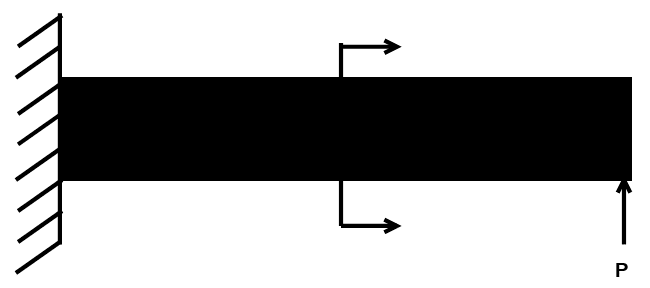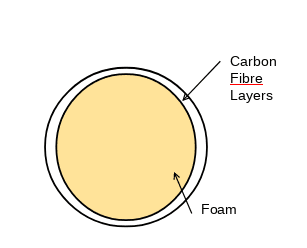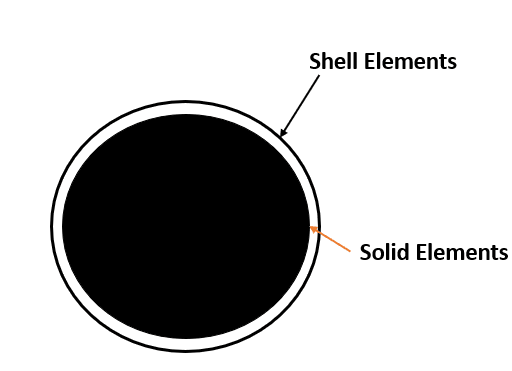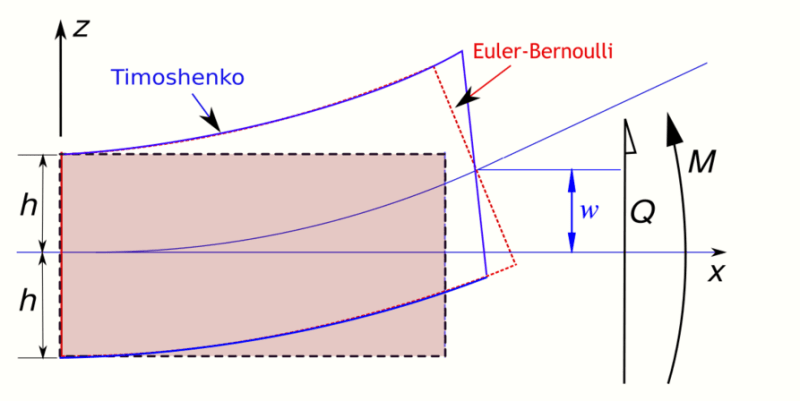Hello,
I need some help in trouble shooting/modeling this setup. I am using MSC Nastran as solver.
The setup is shown below with the cross-section shows the arrangement of the beam.


The outer skin is made from Carbon Fiber laminate and the core is made of foam.
I have modeled the the beam as a combination of PCOMP (CQUAD)-PSOLID (CHEXA)-PCOMP (CQUAD). The PCOMP is setup as orthotropic material (MAT8) with plies and PSOLID is configured as an isotropic material (MAT1).

We have test data (only deflections) for the beam. But when we run our FE, the deflections are coming quite high compared to test (around 35% higher). Trying to figure our where I am going wrong. One more note, there are not DOF coupling elements between PCOMP & PSOLID. No RBE2s or any kind of contact. We have tried with glue contact and we are finding that it making the model more stiffer. I am not sure if we need any kind of DOF coupling element but the deformation looks OK (transverse bending).
The shell elements were extracted from Hexa elements faces, so there is no issue of node connectivity or equivalencing.
Before figuring out the material properties, we want to make sure our modeling methodology is correct. I would appreciate any pointers from experienced people on how to proceed.
I need some help in trouble shooting/modeling this setup. I am using MSC Nastran as solver.
The setup is shown below with the cross-section shows the arrangement of the beam.


The outer skin is made from Carbon Fiber laminate and the core is made of foam.
I have modeled the the beam as a combination of PCOMP (CQUAD)-PSOLID (CHEXA)-PCOMP (CQUAD). The PCOMP is setup as orthotropic material (MAT8) with plies and PSOLID is configured as an isotropic material (MAT1).

We have test data (only deflections) for the beam. But when we run our FE, the deflections are coming quite high compared to test (around 35% higher). Trying to figure our where I am going wrong. One more note, there are not DOF coupling elements between PCOMP & PSOLID. No RBE2s or any kind of contact. We have tried with glue contact and we are finding that it making the model more stiffer. I am not sure if we need any kind of DOF coupling element but the deformation looks OK (transverse bending).
The shell elements were extracted from Hexa elements faces, so there is no issue of node connectivity or equivalencing.
Before figuring out the material properties, we want to make sure our modeling methodology is correct. I would appreciate any pointers from experienced people on how to proceed.



